The transcript from this week’s, MiB: Stephen Cohen, BlackRock’s Chief Product Officer and Head of Global Product Solutions, is below.
You can stream and download our full conversation, including any podcast extras, on Apple Podcasts, Spotify, YouTube, and Bloomberg. All of our earlier podcasts on your favorite pod hosts can be found here.
~~~
This is Masters in Business with Barry Ritholtz on Bloomberg Radio
Barry Ritholtz: This week on the podcast. Another banger, Steve Cohen is BlackRock’s Chief Product Officer and Head of Product Solutions. BlackRock runs three and a half trillion dollars to the world’s largest asset manager. Their iShares ETF division is over $5 trillion. There are a few people in the world better situated to identify what is happening in the world of asset and wealth management than Steve Cohen. Not just fixed income, active index, bitcoin digital assets. They’re also moving into privates and alternatives. Whether that’s an ETF or just part of that platform is something else entirely. I, I thought this conversation was fascinating and I think you will also, with no further ado, BlackRock’s, chief Product Officer and head of Product Solutions, Stephen Cohen.
Stephen Cohen: It’s great to be here.
Barry Ritholtz: We’re gonna talk a lot about what you do at BlackRock and how the company has been growing, but I wanna start with your background degree in economics from Southampton College. Was the plan always to go into investment strategy or what were you thinking back then?
Stephen Cohen: I’m not sure I had a plan. I, I studied economics at school and then at university and I, I was always, I was always very interested in this kind of concept of the markets. I didn’t have any background, no family background in, in markets or investing, but I always found reading up about markets interesting. And, and what kind of got me in, it was a slight fluke. We were talking about flukes before the show. One of my neighbors was a telecoms engineer, and he used to go round to all the banks installing the dealer boards. And he, one day, and I was talking to him and he, one day.
Barry Ritholtz: Various ATMs, automatic tele machines, we call ’em here.
Stephen Cohen: The phone phone systems that, that you use on the trading floors, you know, that come with all the hoot and holler and all that kind of stuff, I think meant
Barry Ritholtz: Those were the big, at ATM manufacturers way
Stephen Cohen: , they were. And, and he said, so I got talking about em and I mentioned this interest and he said, well, why don’t you do a day’s work experience with me? We’ll go to a bank. So we went to one of the banks, I can’t remember which one it was, and I walked onto this trading floor, you know, for someone who had no experience or never experienced this before, it was amazing. There was people shouting, there was screens and flashing numbers and stuff like that. And I thought, you know what? This, this looks pretty cool. This buzz was, was so the kind of combination of an opportunity to work in something that, that took economics and markets and the world, and then this kind of feeling of a buzzy environment, that was the thing. And so I applied to a number of banks and outta university got an opportunity to go to UBS.
Barry Ritholtz: So that was your first gig right? Outta school you were working with convertibles and fixed income and something similar at ING Barings. Yeah. Tell us about your, your work at UBS and ING. What, what sort of job was it?
Stephen Cohen: So I worked, I originally started in fixed income and, and then, and then went into convertible bonds. And a lot of what I spent my time doing was kind of more market strategist type of roles. So talking to clients about what was going on in the markets, what was going on in the bond markets, trade, I, you know, developing trade ideas for clients. And, and then that’s also how I got involved in spending quite a lot of time on the Japanese markets, which I found, you know, incredibly interesting and really got to understand kinda the Japanese culture and, and the, the way, the way the country operated. And
Barry Ritholtz: Is that what led you to Nomura? Or did Nomura come first and then the Japanese exposure that
Stephen Cohen: Yeah, it, it did. So getting involved in Japan kind lent me to, to doing, to doing convertible bonds originally at ING and then with a group of us at Namur. And, and that’s where I spent a lot more time on the Japanese markets. And I think it’s all part of how you, you know, I think back to to those days, you know, Japan was very different to what it is kind of now the market, definitely the market at the time was about nine, the nicko was about 9,009, 10,000 given where?
Barry Ritholtz: Down from 39,000.
Stephen Cohen: Yeah. Now we’re back at 46,000. So there’s like a proper v shape of that market,
Barry Ritholtz: Right. Only took three and a half decades,
Stephen Cohen: Only took three and a half decades. And I, and I managed to do the middle bit, which was not necessarily the most exciting bit, I’ve gotta be honest. But I think, you know, again, it was a, what was interesting about it is you learn about kind of an, an economy and therefore a stock market that is in such a different place as it was then to, you know, looking at the US market or the European markets at the time.
Barry Ritholtz: So that raises a really interesting question. How do you think, how do you think about the 1990s, even the two thousands Euro nomura till 2011? How do you think about those decades versus today? It, that world doesn’t seem like it’s that long ago, but it really feels like it was so different.
Stephen Cohen: It feels incredibly different. I think for Japan it’s completely different. And you know, if you go back to, as you say, the late nineties, early two thousands, you know, the banking crisis that was part of the bubble and the collapse had still not been solved. And it was only really in the early, early to mid two thousands that they finally kind of got their arms around the banking system. And one thing you read about history, and unless you can get the banking system operating properly and lending, you really struggle to get an economy going. The second thing that’s really interesting I think is so different is back then you would, every six months, every year there would be a government led fiscal impulse. Right? And, you know, they used to call it the building the roads to nowhere. Right. You know, paving the entire country. Right. Just gotta kind of spend and spend and spend. And the reaction of the market to that was, this is gonna have no impact. The reaction now to fiscal spending is actually this is, you know, great, this is kind of part of the economy. The, the country kinda being back on its feet. You’re now talking about inflation being potentially an issue in Japan. Whereas there, it was all about deflation. So it’s quite amazing how it has turned around. And you’re seeing that in the bond market and just the yields.
Barry Ritholtz: One, one of the things I’m kind of fascinated about following the Japan, Japan bubble popping in 89 and how long it took to recover from that is the concept, and I’m apologies in advance from my mispronunciation of risu, which is the Japanese concept of these vertically integrated companies, manufacturing, retail, banking, like just every sector, if there’s a banking problem, the entire economy seems to run into trouble. ’cause that whole vertical Hmm. Sometimes it’s Mitsubishi, sometimes it’s whatever. Each of these entities are giant. And if the bank has a problem, wow, you’re really doing some damage.
Stephen Cohen: Yeah. ’cause I think if you look back to the history, and again, this is, this is changing and, and, and different to the way we’d think about kinda western markets and companies, but Japan, historically it was a bank lending market. You, you got financing through bank lending, all the stock market. And so banks were just so central to the way the economy operated. And you see parallels to that in Europe, a little bit less here in the US it’s very different now. You know, there’s the, there’s the banking sector, which is obviously very critical to the way companies and financing. But you have this huge kind of private sector. You have private lending, direct lending, things like that. So again, it’s good. I think one of the things I’ve learned over my career and had the opportunity to work in different markets is you start to see these, the way these economies operate is different and therefore the, the impact on the markets and therefore investors is very, very different.
Barry Ritholtz: So you stay at Mura till 2011. How did you, what brought you from Mura to BlackRock?
Stephen Cohen: I had an opportunity, you know, having had a lot of great experiences. You know, 2011 BlackRock was probably 18 months into the integration of the iShares business or the, the indexing business. And really focused on how do we expand this business, particularly how do we expand iShares this, you know, this ETF business. And back in 2011, Europe European ETFs was still a very nascent industry. You know, now it’s like a two and a half trillion dollar industry. I, European iShares is over a trillion dollars. Back then it was very much still the very early days. And you could see what is, what was happening in the states. And so when I was speaking to BlackRock, you could see this really interesting opportunity to, to kind of take all of what I’d done before in terms of the market’s kinda background and the breadth of experience, and then apply it to this thing that was still pretty new.
And the kind of mission was how do you educate people about what an ETF is? How do you help people start to think about how to use an ETF in a portfolio? And by the way, also, what are the ETFs that don’t exist yet that could exist? And again, you always have to, it’s quite hard. You always have to cast a, you know, Barry, you always have to cast your mind back to what it was then versus your perspective of where you are today. It was still fairly, you know, plain vanilla
Barry Ritholtz: So go back to the 1990s, Im pretty sure the Qs were around then, and SPY might’ve been around, but this is before really iShares was still part of Barclays. But no one really thought that ETFs were a giant market waiting to take place, or I should say very few people thought that the ones who did ended up being at the head of a giant wave. What made you realize 15 years ago that, hey, this iShares thing is gonna be big one day?
Stephen Cohen: Honestly, it was talking to the people in iShares. It was having kind of been introduced to them and having been approached to, to go and talk to them. It was, I learned a lot from just sitting down and, and understanding this. I’d sat in banks, we traded ETFs. They were, to be honest, a very, very small component of what we, of what we did. It was only really when I spoke to the people at iShares and the BlackRock and understood the history of how iShares had grown and where it was then. And the, that sense of mission, that sense of kind of the purpose of giving more access to investing to, to people, you know, and creating more transparency that they had lived as they grow in the US business. And they were growing the European business. And that kind of just captured you. And I think frankly in the last 15 years I’ve seen that and been fortunately been part of kind of driving that. But it was very clear that there was a big opportunity to do something different in an industry, an asset management industry that hadn’t really been shaken up. And I think one thing that ETFs have done, and iShares has led this is really shaken up the industry on behalf of end investors in a couple of ways.
Barry Ritholtz: At at the very least they’re very low cost. And it’s raised questions about our do most, not all, but do most active managers actually justify their fees relative to their performance. And then second, helping to move a lot of mom and pop investors, at least having a core as passive indexing as opposed to an allocation that’s nothing but active managers. I mean, iShares has been the biggest driver of that. When you started at BlackRock, what was, what was the first job?
Stephen Cohen: So I started in the iShares business and I actually set up an investment strategy team. And what we did was go out and talk to clients about what was going on in markets. You know, we were part of BlackRock, now I shares was part of BlackRock. And so there’s, you know, a huge pedigree of investing and how do you take that externally to, to our clients and educate them about how ETFs could be used to implement these ideas, build portfolios. I have to say in the early days, a lot of it was just educating people on what, what is an ETF? Like how does it actually work? How, how, what is a creation? What is a redemption? And what do I need to understand and know? Secondly, how do I then think about putting them in a, in a portfolio? And what’s interesting, I remember a couple of years in probably this probably 18 minutes, months into my time at BlackRock, we did a big study on how do you blend active and indexing. And we were very allergic to the word passive, right? Like, because you know, we used to go out and say to people, which we still do, you know, every decision you make is active, right? That’s right.
Barry Ritholtz: If you market cap weighted, I mean, it could have, it’s a decision been equal cap.
Stephen Cohen: Totally. You know, investing in US equities is a decision, it’s an active decision. Then deciding to use an ETF is an active decision. So we would, you know, we would talk to clients about, and what does it mean to use an ETF? How does it fit with, with active management? Which again, go back to, I think it’s pretty well accepted now. I think BlackRock has, and the ETF industry has played a big, big role in this, but the concept of blending, indexing and active managers and alpha in one portfolio is that’s, that’s kind of very accepted. People gonna get that. It’s pretty standard. It wasn’t back then 10, 14 years ago. And in some respects it was slightly religious in terms of indexing or like, you are either passive or you’re active.
Barry Ritholtz: I recall the phrase that was used in the two thousands core and satellite; And, and you don’t hear that all that much anymore. Now it’s, you have a passive core and you’re, you’re decorating it with active choices around it.
Stephen Cohen: Yeah. It’s kinda how do you get the best out of, out of everything. How, how do you say, you know what, actually, here’s an area where I think that we can deliver alpha, which is really what you’re, when you say active, what you’re really saying is like alpha something, alpha something, something beyond the index. And I come back to a point you made earlier, Barry, about how the industry shifted. I think what ETFs did is they sh shone a light on what is, what is performance, right? And you know, if you can get the index through an etf, it’s very efficient. Then as an active manager, you’ve gotta deliver something more. And many, many active managers of BlackRock do deliver more. But I think that that element of the more became a very important component of the industry and component of how for many investors, they could then blend these, these different tools together to create better portfolios. And I think that’s the journey to me in the last kind of 12, you know, 12, 14 years. It’s been so exciting.
Barry Ritholtz: You said when you began, you went out and spoke to a variety of BlackRock clients. Were these mom and pop investors, were these institutional clients? Were they brokers and RIAs that are investing in ETFs on behalf of their clients? Who were the folks that you first reached out to? It
Stephen Cohen: Was pretty broad actually. It, it tended to be wealth managers and it tended to be institutional investors, which would be, you know, primarily pension funds. But what’s interesting is how that has, how that’s expanded over the last, again, the last kind of decade. You know, if I look at, if I look at the breadth of users now is anything from central banks through to, you know, retail investors in 401k plans or the equivalent in Europe. And I think that’s been one of the secrets to the, to, to why ETFs have grown so quickly is that they actually are very much a product or a tool for anybody and everybody. So it started very much with I would say kind of wealth manages and pension funds. But it grew out and out and out and frankly in Europe we learned a lot from the way the US industry had had grown. We talk all, all the time about how the European ETF industry is probably about 10 years behind the us And so there’s a bit of a roadmap there. And you know, I think we’re seeing that happen in real time.
Barry Ritholtz: When I over at Europe and, and so especially the UK, it seems like index adoption has been very slow. People haven’t quite bought into the concept of, hey, before you go after alpha, at least start with beta. That hasn’t really found a lot of traction there yet. Or are you seeing that start to change in Europe?
Stephen Cohen: We’ve seen that change. It’s definitely behind the US but it is definitely happening. And I think the same forces and drivers that we’ve seen in the US are very much applicable to Europe and ultimately will be to Asia as well, which I think will go on that kind of same journey. So I think it’s just more of a matter of time or timing as to where we are now versus versus versus the US And there are different country dynamics that everywhere in the world play into why different parts of the industry, you know, move quicker or or slower. But I think the direction’s definitely the same.
Barry Ritholtz: Different regulatory regimes, different tax treatment technology. Is the technology really all that different? You would think that adoption maybe some countries on a lag but not 10 years.
Stephen Cohen: Yeah, I think it’s just, so I, I think the last 10 years in the US if we are today in somewhere like Europe, in the ETF industry where the US was 10 years ago, I think the next 10 years in Europe will be faster than the last 10 years in the us. Makes sense. Yeah, it’s ’cause I think that partly because there is a, there is a roadmap that the US has created, it’s different ’cause of regulation, all the things that you, that you mentioned, but I think that everything is happening so much faster now and, and you’re seeing that in ETFs, you’re seeing that in other parts of the industry as well.
Barry Ritholtz: So let’s talk a little bit about what you’ve been doing at BlackRock for almost the past 15 years. You begin in 2011, the growth must have been explosive. What was that like watching this rocket ship take off?
Stephen Cohen: It’s been fantastic. It’s been an amazing experience. You know, the firm has grown so quickly in the last 10, 15 years and not just grown in terms of assets, which is obviously one way to measure growth, but also just the breadth of what BlackRock does for our clients and the breadth of the number of clients that we talk to. What’s, I think, so for, for someone like me, what what’s so been so great is the ability to be involved in lots of different parts of the firm. And, you know, whether that was, again, growing the European iShares business, whether that was running fixed income iShares, which was a fantastic opportunity and time in, or moment in time I should say, in terms of really not just growing fixed income ETFs, but changing the bond market and the impact we’ve had there to now where, again, the breadth of the company with private markets and things like that. So it has been a, a great journey to be on personally, but also to see it from the inside.
Barry Ritholtz: Can you explain what a chief product officer does at a large asset manager? It’s sort of an unusual title in the world of investing.
Stephen Cohen: Yeah, so there are a number of things that, that I look at and my, my team look at. One is how do we continue to make sure that our product range is at the forefront of innovation in terms of where the industry is going. How do we make sure that what our clients are looking for with delivering in whatever format they’re looking at. And I think one of the biggest shifts that we’ve seen in the industry, we talked before about kind of how you blend active indexing kind of together, how that’s become more commonplace and kind of more, more accepted. I think the other thing that is happening is that the way all of our clients are, you know, consuming investments or accessing markets is also shifting. So this concept that, you know, pretty much for the whole time that we were growing the iShares business, when we talked about growing ETFs, we were really talking about, we, we were also talking about growing indexing.
00:21:29 That was very synonymous, right? When you talk about growing ETFs, now you’re not just talking about growing indexing, you’re talking about lots of different things, active ETFs, digital assets. And so I think this concept of how we ensure that as we look across all of the investment capabilities we have as a firm that we want to bring to our clients, that we’re delivering them in a way that works for our clients, that requires us to think a little bit differently to, to the way we’ve had to in the past and the way I think the way the industry has. And so that’s why we’ve brought all this together in, into my role and my, my group. And that includes driving the iShares business and, and the growth of ETFs, making ETFs more central to, to what we do in the firm, but also looking across all of our liquid active business, our private markets businesses with our investment teams and those business leads to, to ensure that our product range, you know, works for our clients. And then helping them, helping our clients actually get the best out of what we have. I started an investment strategy. We spent a lot of time talking to clients about what’s going on in markets, how to build better portfolios, how to get the best out of the tools that they have that we need to build. And then what’s next? What’s, what’s the next trend or theme that’s that’s on people’s minds.
00:22:47 [Speaker Changed] So, so I’m hearing two approaches. One is a top down, Hey, what’s going on in the world? What’s out there that’s interesting that perhaps we’re not addressing and a bottoms up. What are clients asking for? What do they think they want? What do we think they need? What, what’s the key driver of, of new offerings? We could talk a little bit about ibit, which is a unicorn. The, the Bitcoin ETF approaching a hundred billion dollars in assets. I think it could be the fastest ETF to a hundred billion dollars. I don’t even know what’s, what’s close maybe GLD, but that, that was a long time ago. How, how do you think about coming up with new products? How much of it is driven by client demand? And how much of it is driven by just looking from the top down and saying, here’s a hole that we really should fill.
00:23:45 [Speaker Changed] It’s a, it’s a real mixture. It is, you know, we’ll have a, a lot of ideas, we’ll have a lot of ideas that are driven by investment views we have as a firm by our investment teams by working with other people in the industry. And we will combine that with what we’re hearing from clients and where clients are, you know, we we’re engaging with clients all the time around, you know, their portfolios and seeing where are there kind of gaps in a portfolio or where are there, sometimes it’s, sometimes there are investment opportunities, but there isn’t a way to get to it. Again, come back to what ETFs have done. Like how do you give that access to, to something that was new. If you think about Ibit, you know, Bitcoin obviously had grown already to a pretty sizable kind of industry.
00:24:37 [Speaker Changed] I think when Ibit launched, Bitcoin was a little over a trillion dollars, something like that. Roughly
00:24:42 [Speaker Changed] That, yeah. Yeah. And, and so there was a sizable kinda industry already out there, but for many clients or many potential investors, the ease, the comfort, the knowledge understanding of of an ETF wrapper was a great way of allowing them to buy into crypto Bitcoin in this case and make it again, potentially a bigger part of the portfolio. What’s interesting is the number of, you know, in, in that explosive growth that Ibit has had, the number of buyers, investors of Ibit who were already holders of Bitcoin in, you know, other forms was quite notable. And so I think it kind of tests to this idea of actually how do you access different markets sometimes in quite traditional ways and how do you bridge between this kind of traditional world and this decentralized world? And you’re seeing the same thing with ether as well with our ether fund.
00:25:42 [Speaker Changed] So, you know, the, the classic Bitcoin issue is, wait, I have to make sure that this drive doesn’t get damaged. I have to keep in the safe. What’s my password? Hey, this is a lot of money and it’s a bigger pain in the neck to keep track of then the rest of my assets. I can own this in an ETF. Why do I ever wanna own Bitcoin directly? Seems to be what a lot of people are saying. And
00:26:06 [Speaker Changed] That, and that’s what we heard over and over again. Both again from people who had held or hold Bitcoin in digital wallets and felt that this was a kind of a, an easier, better way to hold it.
00:26:19 [Speaker Changed] Especially when you read the numbers. 25% of all coins ever mined. It might even be 30% have been lost. Either the drives were damaged or the passwords were lost, which is,
00:26:29 [Speaker Changed] There’s some great stories out there. Crazy
00:26:31 [Speaker Changed] Guy who went out and bought a landfill ’cause he’s,
00:26:33 [Speaker Changed] Because he was trying to find the
00:26:35 [Speaker Changed] Of $200 million worth of Bitcoin on the drive that was accidentally Yeah. Thrown away. I mean,
00:26:40 [Speaker Changed] So, you know, putting in an I share probably would’ve been a, an at least an easier way of of right of owning a landfill. It,
00:26:49 [Speaker Changed] It’s, it’s kind of amazing, but it raises a question that I’ve been thinking about for a while. Alternatives and privates, whether it’s private equity, private debt, private infrastructure and real assets are probably the fastest growing segment of the market. Are we ever gonna see something like that in an ETF wrapper, an illiquid alt in an ETF,
00:27:17 [Speaker Changed] Possibly? Look, it’s definitely something that a lot of people are looking at, including ourselves. But there are a lot of ways to, I think the biggest story I think people jump towards the kind of private markets and ETFs and the real story is how do you open up access appropriately for more people to access private markets as part of the portfolio. So if we think about a world which we believe in which you are kinda moving from, call it 60 40, you know, the traditional right portfolio to more of a 50, 30, 20 where 20 is private markets and that’s applicable to somebody who owns a defined benefit scheme. In fact, they’ve got that already probably more through the, the way the scheme’s managed. But actually if you then apply that to say to other pension types, like a defined contribution scheme or a wealth investor, that kind of journey towards incorporating more private markets into a portfolio for all of the diversification reasons that, you know, we’ve talked about a lot that how that happens is, is the real work and that may end up requiring an ETF, but I think there are lots of other ways that, you know, that can open up the door to private markets being a bigger part.
00:28:26 Either either a completely new part or, or a bigger part of a portfolio for, you know, an individual retiree or an individual investor. Again, it comes back to what we were saying earlier on about rather than thinking about different product types, an ETF or a mutual fund being associated with one type of strategy, it’s actually saying what are the strategies that we believe would help a client, an investor have a better portfolio for whatever their goals are? And then how do you best put that together?
00:28:58 [Speaker Changed] So it’s less and what unique, less about the product? More about the solution to the, to
00:29:02 [Speaker Changed] Me it’s about the portfolio. Yeah. What, what’s the solution exactly, what are you trying to achieve and what, you know, and if it’s a, you know, long term retirement or retirement income, whatever, whatever it is. And then what does the portfolio need to look like or should look like and how does it evolve over time? And then how do you do it right? And what are the kind of mixture of tools that are most, most appropriate to, to get you there. So that’s the shift in thinking that I think
00:29:24 [Speaker Changed] People, so let’s dive into that a little bit. You know, the advantage of stocks, bonds, convertibles. Hmm. They all come with a CUSIP number. It’s pretty standard in terms of the custodianship, where, where it’s held, what sort of public information is a about available, the due diligence you can do about it, how to get liquid. When you want to get liquid, all those stocks, bonds, and, and put convertibles as sort of a hybrid. Everybody knows how to operate around that. It seems like when we look at privates, they’re all one-offs. The custodian ships are all a single thing. Doing the due diligence is time consuming and expensive. They’re, the hope is they’re, they’re not correlated and you’re giving up liquidity in exchange for the illiquidity premium. Can that ever be standardized enough that as a wealth manager, I could say, Hey Steven, I wanna move 10, 20% of these clients’ assets to a diversified set of equity debt Yeah. And real assets and I want some liquidity. Like is this a pipe dream? Oh, and I don’t want any K ones ’cause they’re a disaster to deal with. Like, if that were something that was turnkey and available, I would think that every wealth manager in America would rush in that direction. How long might it be before privates look something like public markets, or at least the pain points are, are reduced to Yeah. Something tolerable.
00:31:04 [Speaker Changed] I think we’re on a, we’re on a journey and I think that that is about, first of all, developing investment strategies and therefore, and being able to put them in products that work for a wealth manager. Secondly, there’s a big, you know, the operational lift, right? The, the technology development that is happening. And we’re working, we’re working with a number of firms around how can we make sure that, for example, model portfolios can incorporate private markets in a more efficient, kind of easier to use way. It’s gonna be different to public markets, it should be different to public markets because I think the role of a, of a infrastructure, for example, in a, in a, in a portfolio is different to the role of owning stocks or owning bonds. And I think that part of, you know, part of the way we’ve always thought about the role of stocks and bonds as being different as well, you know, bonds as a ballast to a portfolio, stocks as a growth driver for example. I think you’ve gotta
00:31:58 [Speaker Changed] Think about that. I’m enough when bonds actually generated attractive yields.
00:32:03 [Speaker Changed] Maybe that’ll come back, you know, we might need a bit of inflation, but yeah, one day, one day, Barry, will we be back on the podcast too? Absolutely. To cover that off. But I, I think that different role is very important, but there’s a lot of development to that is happening to be able to make that more efficient than it has been historically. And I think that’s, I think we will see a lot of change in the next couple of years.
00:32:27 [Speaker Changed] You, you mentioned technology, let, let’s dive a little deeper into that. BlackRock acquired pre Quinn and acquired E Front and I’m read about some integration into your Aladdin platform. How significant are those tools when it comes to offering private market investments to the public?
00:32:49 [Speaker Changed] Incredibly important. I think that, you know, for anybody who is for a wealth manager who is running a portfolio for a, for a client, the, it’s not just as, you know, it’s not just about buying the different products or doing the asset allocation, it’s also about the risk management of, of what does that portfolio look like? And that’s really what Aladdin is about. And as more and more investors, whether that is a retail investor or wealth wealth investor, or whether that’s a big pension fund, incorporate private markets into portfolios and blend private and public. And, and I think again, if you go back over that 10 15 year journey, we started with indexing on one side of the floor and you know, active on the other side. And we gradually brought those together and that became commonplace to blend. And I think we’re now in that world of starting to blend public markets and private markets, which historically were completely distinct and we’re starting to kinda blend, blend those because, because the industries are crossing over more companies are staying private for longer, et cetera, et cetera.
00:33:52 So as we bring those together, the need to be able to, you know, risk manage and understand those portfolios in different scenarios is incredibly important. That’s what Aladdin is about. With Preco, what is so exciting is that I think over time the private markets will become more transparent. There will be more data available and around and very similar to what, what Aladdin and BlackRock did with public markets will happen in the private markets as well. And that I think will help more and more investors access private markets in the way and understand what it is that, that they have partly of which is again, understanding the different liquidity and, and being comfortable that they’re different for a reason. And you’re not trying to create a one size fit fits all. You’re trying to create a portfolio that delivers the right, the right outcomes. Aladin I think is gonna be critical for that. So
00:34:45 [Speaker Changed] Let’s talk a little bit about product development. Just in the ETF space this year, over a thousand new ETFs have come out, or at least we’re on pace to do that by the end of this year. This sort of hyper development of ETFs, it, everything we’ve talked about seems to be very thoughtful and very measured with a, a really specific approach. Kind of feels like the rest of the industry is just throwing stuff up against the wall to see what sticks, how, how do you look at this?
00:35:18 [Speaker Changed] We can only focus on what we do, so,
00:35:20 [Speaker Changed] But you have to be aware of what you see, but you
00:35:22 [Speaker Changed] Are aware of what’s going on a hundred percent,
00:35:24 [Speaker Changed] Three x inverse bitcoin. Like what, why, why do I want that? Or why does anyone want that?
00:35:31 [Speaker Changed] Yeah, you’ll have to ask them.
00:35:33 [Speaker Changed] I mean I guess it’s, they want to give people an opportunity to make any type of trade and every type of trade. I’m assuming that’s not your approach.
00:35:43 [Speaker Changed] I think there is a lot out there of throwing things out that sticks. Our approach is very much where do we believe that we can develop products, strategies, exposures that are gonna help create better portfolios, right? And if you look at the evolution of the ETF industry and what’s happened is it started, you know, go back 30, 30 plus 20 years ago. It started very much with how do you give access to kind of broad indices and then it was how do you inequities then how do you give access to more granular exposure like sectors or different countries? Then it was how do you move into different asset classes, like fixed income for example. And then more recently it’s been something like digital assets with, with ibit and that’s really been the journey of iisha s right? And I think that’s been therefore the journey of the industry as we’ve, as we’ve led it that I remains very much our view how we think about continuing to expand the iShares platform.
00:36:42 And that includes now using the ETF technology we’ve built to take things like active funds and wrap them into an ETF because the ETF is a more efficient way for many investors to actually own those different strategies. But again, it ha it starts with the strategy and I think that, you know, for us it’s about how do you, what, what is it that you are developing in terms of an exposure or strategy? Why, how does it fit with the world that we see today in terms of where we think the world is going from a market standpoint and a macro standpoint, how does it fit in terms of kind of a portfolio construction standpoint? You’re gonna have waves of innovation. Right now we’re having huge wave of, of of ETF launches and in particular the last two, three years, you know, the ETF is, it’s, it’s gone from being kind of very much on the side of the industry to being very central. We’re excited about that. You know, that’s what we were, that’s what we’ve built at BlackRock and iShares. But it’s also meant that ETFs are very much kinda being used more broadly and you know, that’s gonna be I think part of how the industry evolves. And then you kinda matures,
00:37:45 [Speaker Changed] Especially on the active side where you get all the benefits of mutual ownership without the capital gains penalty that you get in mutual funds. So it makes sense that a lot of active ETFs would develop where they might’ve been active mutual funds. Yeah. What else do you see as changing or in the midst of, of transforming is, is it by asset class? Is it by, you mentioned geography or sector, what is really in flux these days?
00:38:19 [Speaker Changed] So I think that, you know, when you look at, I’ll give you a couple of good examples. So digital assets I think is kind of fairly early days. Ibit is incredibly fast growing. It was the fastest to 20 to 30 to 40 to 50, and now hopefully to a hundred billion as an ETF. And we, you know, we have an Ethereum ETF there. I think there will be more product development in something like that. And again, for us that’s about bridging this kind of defi world with the traditional kind of finance world. That’s one area. The second area is take something like fixed income. You know, we’ve been building out fixed income ETF industry for 20 years. The industry is now two and a half-ish trillion dollars. We think it’s gonna be 6 trillion by kind of 2030. The growth is huge. Less than 2% of bonds in the world are in an ETF. Wow. So it feels, and having been, I can tell you having been on the journey and, and and been out there, you know, kind of pounding the streets on the, the value of fixed income ETFs over the years, it feels like this has become really, really big. And it has, and yet when you think it in the context of the $140 trillion of fixed income out there, you know, ETFs are still a pretty tiny part of the, the market in terms of how people own bonds.
00:39:39 [Speaker Changed] It’s, it’s relatively large compared to what it was, but in absolute terms. But
00:39:43 [Speaker Changed] In absolute terms, they still, you know, we’re still to use in and out the, the, the sports terminology of given it’s the World series, you know, the first inning, maybe the second inning. And then even if you look at e what’s really fascinating is you, if you look at, and we talked about active active ETFs, and again, that’s still very early stages,
00:40:01 [Speaker Changed] But on fixed, fixed income, they actually seem to do very like the broad, the Bloomberg Ag includes everything good, bad, and different. It seems like it’s relatively easy to capture a little bit of fixed income alpha with a handful of screens. You’re taking out the, the lowest credit quality or you’re taking out the riskiest credit that you’re not getting compensated for. Why does fixed income active seem like it’s a better bet or a higher probability bet than active equity?
00:40:37 [Speaker Changed] I think the historically fixed income, I’ll go back to when I started, was very much a, a world of limited transparency and, and kind of understanding, frankly, I think the understanding for most investors of fixed income relative to, I don’t mean, I don’t mean investors who are doing fixed income all, all every day, but for, for most retail investors in particular, I think people have a much more natural affinity to stocks than they do for bonds in terms of kind of the understanding. Bonds feel complicated at times. It feels like an in, it’s a world we don’t quite understand. Whereas equities, you kind of, you, you know, you know, Google or what, what or whatever it is. And so I think there’s always been a a, a sense of kind of outsourcing those decisions kind of more. So. The other thing is that the, the indices, the indexing market in fixed income has been slower to evolve. So you mentioned the ag and people tend to, when they think about fixed income indexing, they automatically go to the ag. Sure, the ag is one index and it’s a very specific index in terms of what it is. It doesn’t have a huge amount of credit in it, for example. But there are
00:41:43 Other indices with Bloomberg for which we have products like Universal that actually are much more representative of fixed income. So part of it also is, is, you know, what are you benchmarking yourself against? And I think we went through that experience with equities and we are going to go through that, or we are going through that experience with, with fixed income. And the other thing we’re seeing with fixed income is that we’re developing and building the more granular strategies in fixed income. So we’re carving up the market in fixed income the way we did in equities through ETFs. So if you want to own zero to three year government bonds own escar, if you want to own long-term treasuries own TLT, if you want to own bits of the cr, different types of credit crossover, you can now do that through ETFs. So, you know, it is an amazing tool.
00:42:29 And what’s fascinating about fixed income ETFs is that some of the fastest growing users are asset managers. So fixed income managers using ETFs as a way to be better at their job. And I think, again, that’s that blending of, of, of indexing. But even in the equity world, you know, equity indices are evolving. We, we were saying if you look back to 2000, you know, the top seven, you know, the whole kinda s and p was worth the equivalent to what the top seven stocks were worth, you know, six months ago. And so you mentioned earlier in the program equal weight s and p we’re seeing a lot of demand right now for things like equal weight or cap indices. We launched a top 20 fund. Top t we did the same thing with nasdaq. You know, even the s and p 500, owning the top 20 stocks versus owning the 500 stocks is a very, very, very different game. And so even something like large cap US equities, you, which you would’ve thought there was nothing else to innovate in, even that has been the area where we’ve probably done more in the last six months than than many other areas because the dynamics of of the US equity market have shifted so much in the last couple of years and, and investors are looking for different things
00:43:43 [Speaker Changed] Coming up. We continue our conversation with Steve Cohen, BlackRock’s Chief Product Officer and head of Global Product Solutions, discussing what goes into product development in finance. I’m Barry Ritholtz, you’re listening to Masters in Business on Bloomberg Radio. I am Barry Ritholtz. You are listening to Masters in Business on Bloomberg Radio. My extra special guest this week is Steve Cohen. He’s BlackRock’s Chief Product Officer and head of Global Product Solutions. He also sits on BlackRock’s global executive committee. Since, since we’ve been talking about technology and you mentioned the top seven I I I’m legally obligated to ask a question about artificial intelligence and ai. What is AI doing to your business of developing new products? How we thinking about either AI as an asset class or actually deploying AI to help build new products?
00:44:55 [Speaker Changed] I think we’re seeing AI in probably three areas. I, the, the first one is obviously AI as an investment theme, which is very well kind of publicized, et cetera. And we’re seeing that through things like data centers, obviously stocks, credit, et cetera. The second one is AI in terms of investment strategy. For example, BlackRock, we’re very fortunate to have a systematic group investment group that is, has a 40 year track record in history of delivering really great performance. And you know, they would argue they were doing AI well before it was called ai when it was called machine learning or whatever it was called before
00:45:38 [Speaker Changed] That. It’s been around, most people think it’s new thing, you know, it’s been around a while. Watson played Jeopardy and I forgot the one, was it Deep Blue played chess
00:45:47 [Speaker Changed] And go,
00:45:48 [Speaker Changed] Those were 30 years ago.
00:45:50 [Speaker Changed] Yeah. So, you know, it’s gone through its iterations and, and so, you know, and they’ve got some fantastic examples of the way they’ve used machine learning stroke now AI, to really understand, you know, every single day they will pass thousands of reports, earnings calls, et cetera, transcripts for for Right, for sentiment. And it, and, and you know, and the result, the investment results of those, of those signals that they create are, are really quite, quite fascinating and, and very lucrative in terms of investment alpha. And so we’re really seeing a huge demand right now for systematic investing. And this is something that historically people were nervous about because it was a black box, they didn’t understand it. And now people are using things like chat, GPT, et cetera, which is a black box, but they’re seeing the value they’re getting. And so what’s interesting is there’s a psychological shift and a greater acceptance of saying actually systematic investing using ai.
00:46:53 That’s really interesting and exciting and we’re so, so I think the second thing is we’re seeing it through using AI to be better investors. And then the third one is product development. And so how can we use the data that we are able to collect and effectively deploy big data and the AI that that we’ve developed in-house that sits on that to identify what are some of those themes that are coming up? What are some of the things that clients are talking about or being picked up in the, in the news or, or, or whatever it is. And be more kind of systematic, I would say, in being able to see what those those are. And also we are able to use it to test and stress test strategies that are new in different market environments. So it’s a really, again, it’s a really exciting time for, for product development because it’s giving us new tools that we didn’t have before.
00:47:45 [Speaker Changed] So, so BlackRock tends to come out with these very well thought out very rational products. And the question that, that I’ve been thinking about when I first started doing my homework for this is, what are some of the crazy ideas that you looked at and said, yeah, no, that’s just a bridge too far. Like what hasn’t come out? ’cause it was just too, either not solving a problem or, or just too wild and and reckless. Oh
00:48:13 [Speaker Changed] There’s a whole treasure trove of Oh really? Yeah, we could do another podcast, I’m sure. But you know, typically what’s interesting about it is there are two reasons why you might end up like that. One is it’s, it’s a crazy idea, but there’s just really no demand for it. Okay. And, and it for for well
00:48:32 [Speaker Changed] That’s an easy business
00:48:33 [Speaker Changed] Decision, which is an easy business decision, right? The second time. Often it’s, you’re just too early and, you know, I mean there
00:48:39 [Speaker Changed] Could have been an ETF for E and Bitcoin 10 years ago if the SEC would’ve allowed it. If
00:48:46 [Speaker Changed] They were allowed. Yeah. Yeah. So sometimes it’s the regulatory, you know, it could be, it could be that the industry, the industry in the broad sense of the word regulators or what whatever aren’t quite ready, you are not, you’re not able to actually build the thing that you’ve got an idea for. It could be that the market is not quite ready. Fixed income ETFs is a good example. We looked at things 10 years ago and decided that actually that the, that the fixed income market wasn’t ready. We weren’t quite ready to be able to do that in an ETFA decade on. And by the way, we launched a bunch of those as well, right? Knowing that it would take a long time. We didn’t expect to launch it and it’d be a, it would take off straight away knowing that it would take time for the, for the kinda market to get there. But we were comfortable we could manage that fund. And so often you end up in a situation where you’re kind of waiting for maybe the liquidity of the market to be, to be broad enough that an ETF works. So you know it’s gonna work in the future. It’s just a little bit early now, so it’ll come with different reasons why that may be the case.
00:49:46 [Speaker Changed] So, so that raises the question, what’s next on the product roadmap? So we’ve, we’ve talked about digital and, and crypto, we’ve talked about fixed income. Mm. And we’ve also talked about privates. What are you seeing as the next 10 years?
00:50:01 [Speaker Changed] It’s really across the whole waterfront of what you just said. I mean obviously with, with HPS and GIP with our new partners, there’s a lot of opportunity we believe to develop in the private credit and the infrastructure space and also the crossover of, of those kind of areas. I think this, this crossover of public and private markets and what does that look like in, in portfolios, whether that’s within a fund or in a, in a portfolio. I, I think is gonna be a big and very interesting theme. And, and the third area I think is we, you know, we constantly, obviously we’re, we we’re always working with our, our active portfolio managers to, to develop better strategies and, and new ideas they have. But we are always, always looking back as well. ’cause I think you can fall into the trap of thinking you’ve done it.
00:50:49 And I mentioned the example of, you know, US large cap equities and indexing and what, why would you ever look at that as an innovation area? Well, ’cause the, these markets keep changing and I think the world we’re, the world we’re in right now and a good example of the last six months, the number of clients around the world, particularly outside the US who are questioning their US dollar exposure is pretty significant. And what does that mean for time? Look at the move in gold. Suddenly that is, you know, the 4,000. Yeah. And so, you know, you see, you have to, I think you have to be willing to question the environment, the macro, the market environment and say actually what does that mean for, for things that we kind of thought we’d done. And I think that creates a lot of opportunity for our, for our clients to, to reinnovate things.
00:51:34 [Speaker Changed] So before I get to my favorite questions, I have one last broad question for you. What do you think investors and clients are not thinking about, talking about overlooking, but perhaps should be aware of? It could be an asset, a geography, a data point of policy. What is below the radar that really should be front and center?
00:52:00 [Speaker Changed] I think there are things that are kind of half on and half off the radar. Like, you know, the impact of what’s happening in demographics and immigration and changes like that and what does that mean for, for inflation, for the different types of income streams that people are going to need is something that’s, it’s kind of talked about but always slightly in the background. I think that’s gonna come more and more to the fore. We, it ties into the fiscal policy kind of, which is very much kind of talked about. I think that’s one thing. I think the second thing is we’re still, we’re still living through a lot of the post COVID impact and you know, we don’t, co COVID is kind of done and we would, it feels like it was many, many years ago, but there are a lot of industries and luxury is a good example, which is still being impacted by what happened then both in terms of the lockdown and then the immediate kind of boom that happened afterwards. There are still a lot of things that are still trying to work their way through the, through the system as it were. And that tends to be something I think people have kind of forgotten. But from an investing standpoint is actually pretty important.
00:53:03 [Speaker Changed] I I completely agree with you. It’s funny, we were just having a conversation the other day about housing and someone asked why are we have such a shortfall of single family homes in the United States? Hmm. Not even talking about affordability of homes. Yeah. Just sheer number. And the answer was that’s a hangover from the financial crisis 15, 16 years ago following that boom and bust a lot of builders shifted over, pivoted over to multifamily houses and apartment buildings. Right. Not single family. So it’s 15 years ago. Yeah. And we’re still still suffering the effects of it. Yeah. It’s, it’s amazing how, how long a tail some of these things happen. It takes a long time. I I don’t have you all day. I know you have a flight to catch tomorrow, so I have to get you out here at a decent hour. Let, let’s run through some of our favorite questions, starting with, tell us about your mentors who helped shape your career.
00:54:00 [Speaker Changed] So I’ve, I think I’ve been very lucky. I’ve, I’ve in, in each stage of my career, I’ve always had I think somebody who has been, whether a manager or a mentor, but, but really helped me think through and frankly just supported me in my career. I think two particularly jump out. One is the person who actually took me to, to ING Barings and who I first worked with there, who sadly is no longer with us, but was just an incredible friend. And, you know, in quite a pivotal time in my career, really helped me think through what do I want to do next? And, and kind of set me on that next kinda journey. And then the other one, I have to say a shout out to someone who was very early in my career, who I worked with, who I kind of looked up to in terms of their success, who became my wife. So that became a kind of a good man. She continues to mentor me in slightly, you know, different, more direct ways
00:54:58 [Speaker Changed] That, that’s a, that’s a nice couple of mentors. Let, let’s talk about books. What are some of your favorites? What are you reading recently?
00:55:06 [Speaker Changed] Big fan of people like Ian McEwen.
00:55:10 [Speaker Changed] I know the name Martin
00:55:11 [Speaker Changed] Martin Amos. They’re just great, great authors.
00:55:15 [Speaker Changed] Gi give us some titles. Mar Martin, Amos and Ian Mc McKeon.
00:55:18 [Speaker Changed] Ian McKeen. Yeah. There’s a great book Ian McKeen called Sweet Tooth, which is all about, it’s got a great twist, which I won’t go into, but it’s no spoilers. It’s about 1950s, 1960s kind of spies in, in, in the uk. And there’s a book by Martin Amos, which is the first, I can’t remember the full title. It’s time something, but it’s written backwards.
00:55:41 [Speaker Changed] I kind of remember my wife reading something like that from Martin a MI don’t remember the title.
00:55:46 [Speaker Changed] It’s fa, it’s fascinating. He, he writes it backwards so everything happens backwards. So the day starts with the character going to bed and it’s the con, it’s written in the, as the consciousness of the the man. And so it’s brilliant. It’s just,
00:56:04 [Speaker Changed] I I, I’ll dig up the,
00:56:05 [Speaker Changed] The title Very cleverly written, huh? Not a good
00:56:08 [Speaker Changed] Story. Actually, not quite inception,
00:56:12 [Speaker Changed] But it’s in that guise of, of trying to think about how time works and Yeah. I won’t spoil it for you. Read it All right. It, but it, it’s the kind of book where even the most simple paragraph, you kind of reread it ’cause you’re trying to get your head around the fact that it’s being written backwards. Huh.
00:56:30 [Speaker Changed] Let, speaking of inception, what, what’s keeping you entertained these days? What are you streaming either watching or listening to?
00:56:37 [Speaker Changed] So, we’ve been on a bit of a marathon recently. We’ve done Yellowstone 18 83, 19 23, and Landman.
00:56:43 [Speaker Changed] That is all on my, in my queue and a heaven star. I saw the first Yellowstone on a plane and I’m like, oh, I gotta drag my wife into this one.
00:56:51 [Speaker Changed] It, it’s good. You need to commit, but it’s well worth it. Very, very, yeah. Very grip. All very different as well.
00:57:00 [Speaker Changed] So you are, you’re a Brit giving me an American Western recommendation. Let let this New Yorker give you an MI five London recommendation. Have you seen the film Black Bag?
00:57:15 [Speaker Changed] I
00:57:15 [Speaker Changed] Have. You have.
00:57:16 [Speaker Changed] I I saw it on a plane. I spent a lot of time on planes. Okay. I actually saw her on a plane. It was very good.
00:57:21 [Speaker Changed] I very clever. All upside surprise. Holy unexpected.
00:57:24 [Speaker Changed] Yeah. Very good. I’d never heard of it.
00:57:25 [Speaker Changed] Yeah. And then, and
00:57:26 [Speaker Changed] I assume you watch slow horses.
00:57:27 [Speaker Changed] I, that’s where I was about to go is so I, I, I had my wife watching through the second season and she kind of tapped out. I’m trying to bring her in for the most recent season.
00:57:37 [Speaker Changed] You’ve gotta get in. We are very much the, we won’t watch it until it’s all out.
00:57:42 [Speaker Changed] We, we’ve made that mistake not doing that with certain things. It’s, we binge it’s incredibly, we binge like, what, what is this? Watching one show a week? What are we living in the nineties? I can’t, like,
00:57:54 [Speaker Changed] I’m a cave. It’s like when an advert appears. Right,
00:57:56 [Speaker Changed] Right. It really is. Final two questions. What sort of advice would you give to a recent college grad interested in a career in fill up, fill in the blanks, investing ETFs, financial product, developing fixed income? What’s your advice for that person?
00:58:15 [Speaker Changed] Go for it. I, this, I think that, I really think this industry is changing so quickly. I think it’s changing faster than I’ve, in my kind of career in terms of what is happening, which I think creates a lot of opportunity for somebody starting out. My advice I always give to all of our analysts who are starting out, and frankly I give it to pretty much all of our team, is you’ve gotta keep learning. Th this is constantly changing. And, and you’ve got to just, you’ve always gotta be on that kind of learning curve. And, and that’s how you get better. It’s also where the opportunities come from a career standpoint.
00:58:52 [Speaker Changed] Make makes a lot of sense. Our final question, what do you know about the world of investing product development ETFs today would’ve been helpful back in the 1990s when you were first getting started?
00:59:05 [Speaker Changed] Well, if I’d known that Bitcoin was gonna be 120,000, I probably would’ve done Well that’s done something differently.
00:59:09 [Speaker Changed] Well, you could say that, you know, back
00:59:11 [Speaker Changed] The truck, say
00:59:11 [Speaker Changed] About everything. Right. Back up the truck on Amazon in 2002. Or Apple. Apple in 98 Completely. Or Microsoft from the IPO.
00:59:18 [Speaker Changed] No, I think one thing it does lend itself to, and it sounds a bit strange for somebody who started out, you know, on a bond trading floor doing bond maths, is, you realize over time, only when you look back the power of compounding. I know everyone writes about compounding and you learn about it, obviously, but it’s only when you have been around for a while and you look back at what compounding actually means as a, both a an investor, you know, you know, managing your own kind of future retirement and wealth. And then, or as a, or as somebody who works with, with clients about managing portfolios, what compounding actually does imply, and I was thinking about that the other day actually.
01:00:00 [Speaker Changed] It, it’s very counterintuitive. Hmm. There’s nothing in the natural world in your ordinary experience as a mammal that would give you any insight into just exactly how exponential it is. Yes. Yeah. It’s really fascinating. Well, well thank you Steven, for being so generous with your time. Thank you. We have been speaking with Steven Cohen. He is BlackRock’s Chief Product Officer and head of Global Solutions. If you enjoy this conversation, check out any of the 586 we’ve done over the prior dozen years. You can find those at iTunes, Spotify, Bloomberg, YouTube, wherever you find your favorite podcast. Be sure and check out my new book, how Not to Invest the ideas, numbers, and behavior that destroys wealth and how to avoid them at your favorite bookstore. Now, I would be remiss if I did not thank the correct team that helps put these conversations together each week. Alexis Noriega is my video producer, Anna Luke is my podcast, produ producer Sage Bauman is the head of podcasts at Bloomberg. Sean Russo is my researcher. I’m Barry Ritholtz. This has been Masters in Business on Bloomberg Radio.
~~~
The post Transcript: MiB: Stephen Cohen, BlackRock’s Chief Product Officer and Head of Global Product Solutions appeared first on The Big Picture.

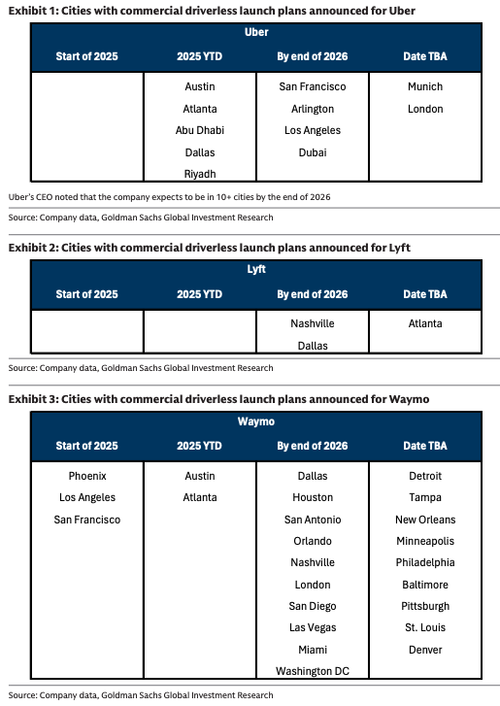
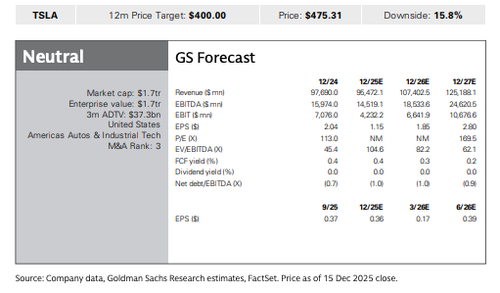

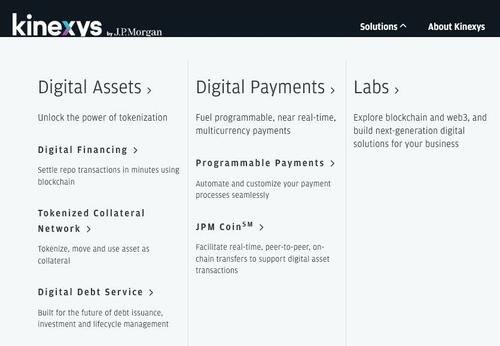
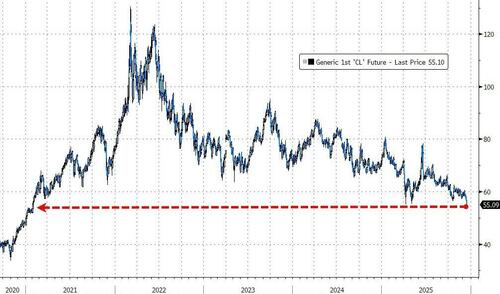
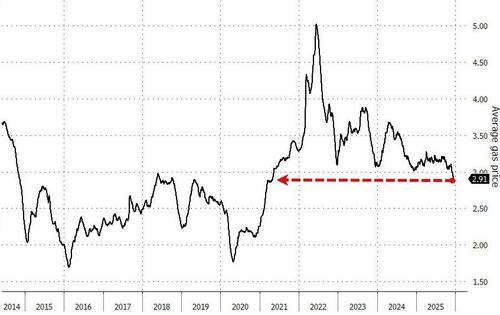

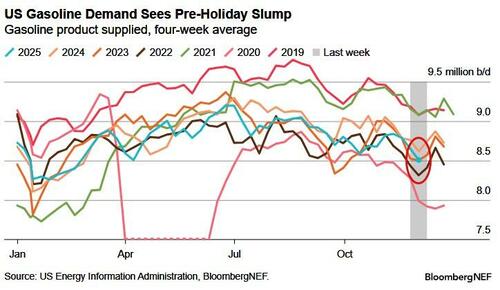
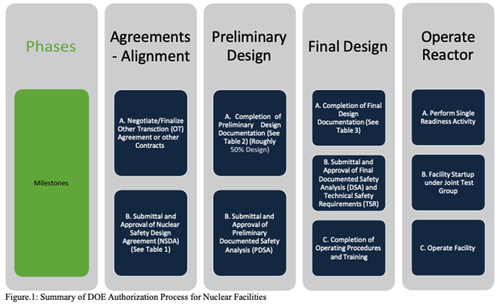


 Trucks in Phoenix on Nov. 19, 2025. Allan Stein/The Epoch Times
Trucks in Phoenix on Nov. 19, 2025. Allan Stein/The Epoch Times Via AFP
Via AFP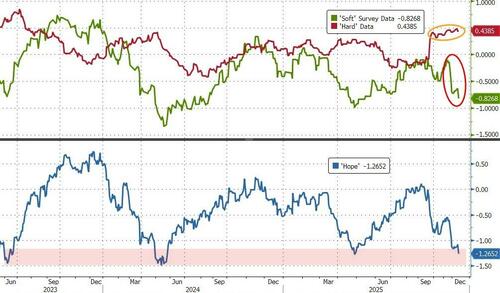
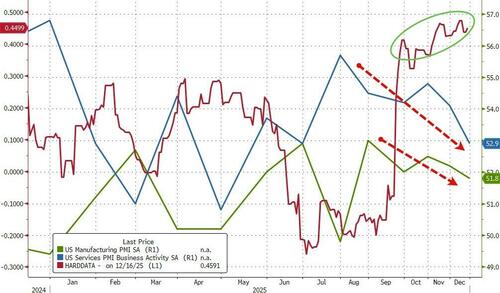
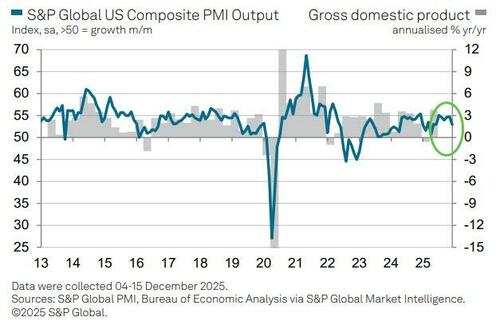
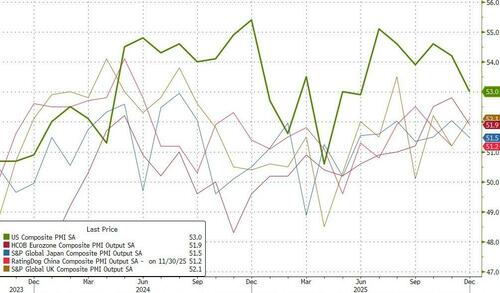
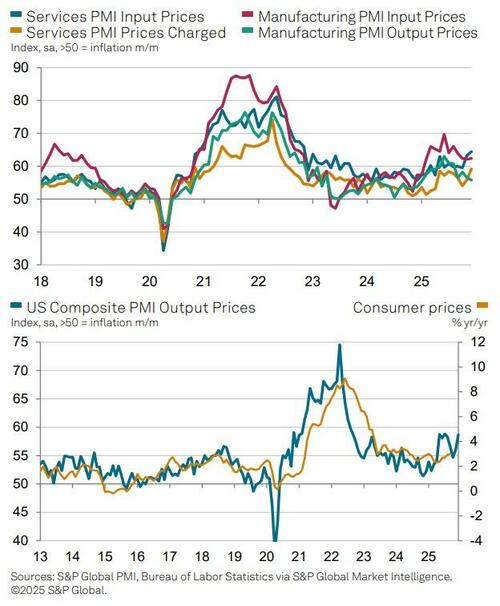




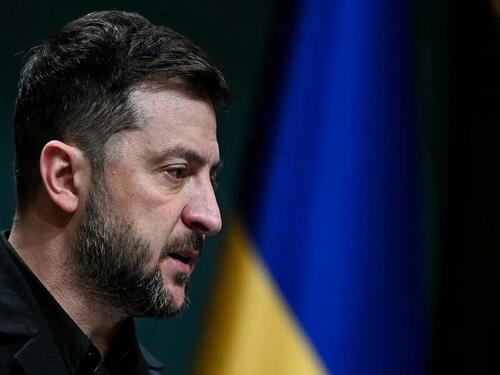
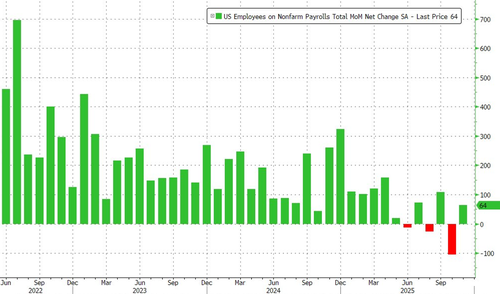
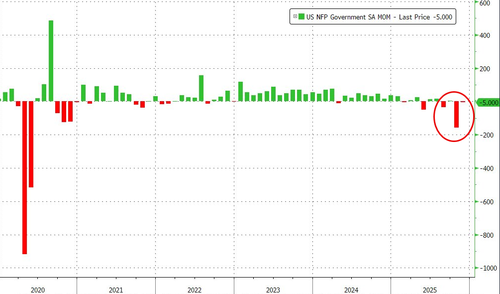
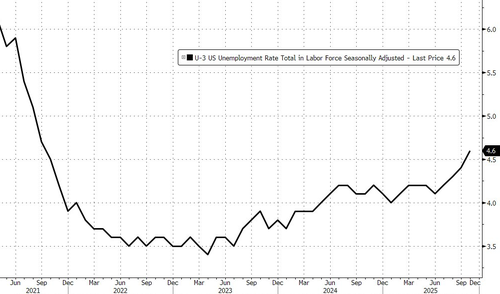
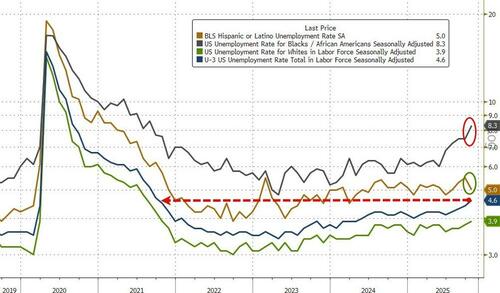
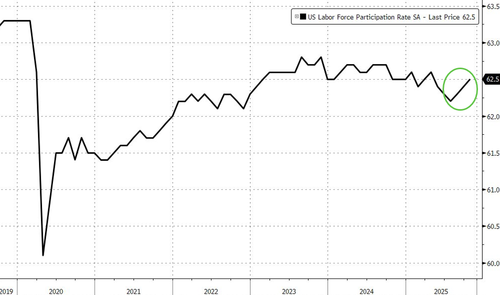
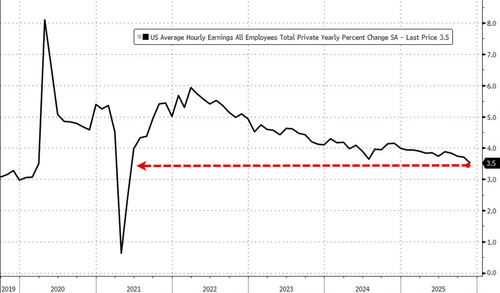
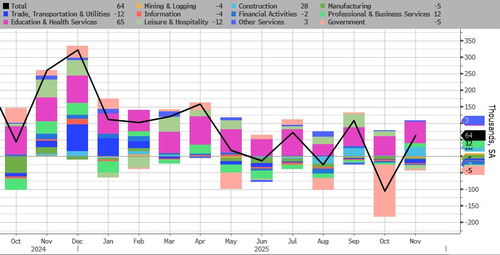
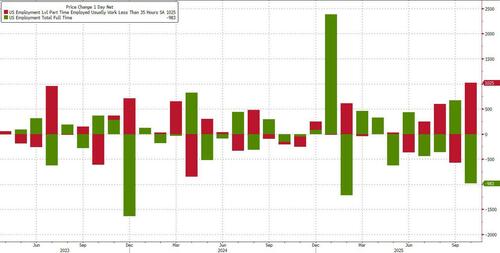
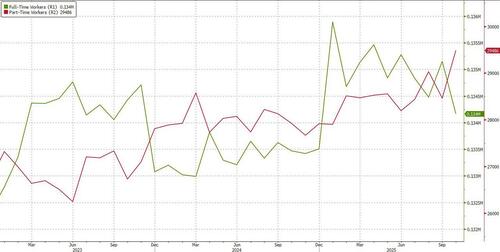
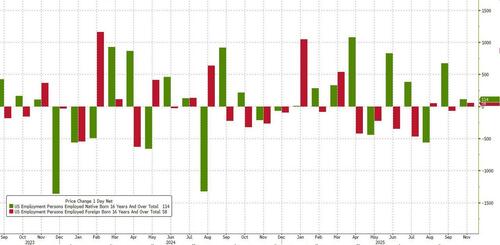
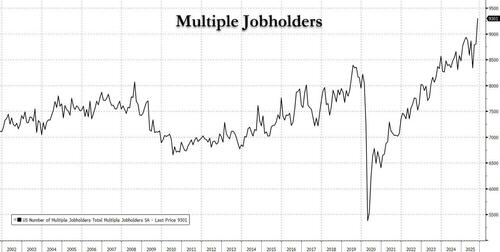


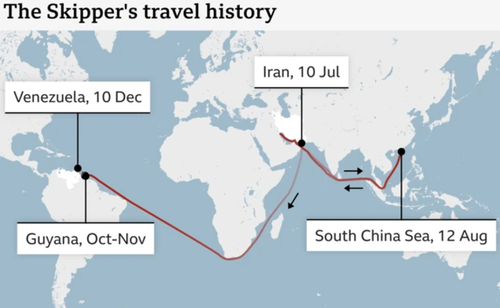
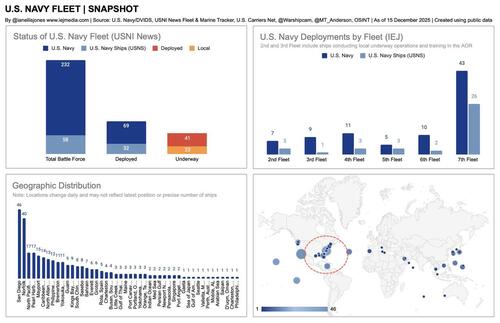
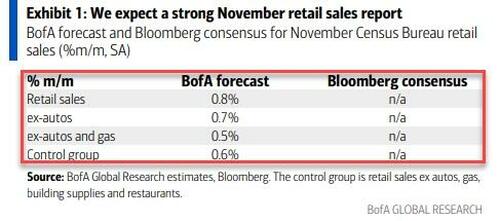
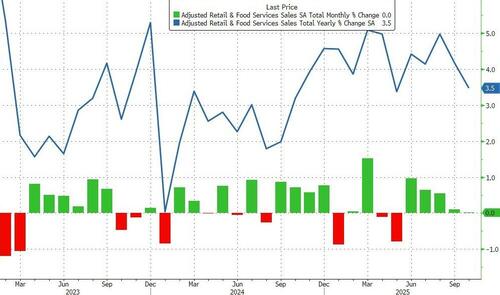
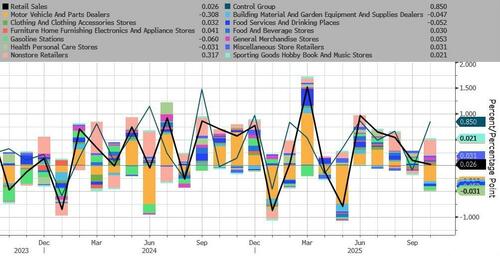
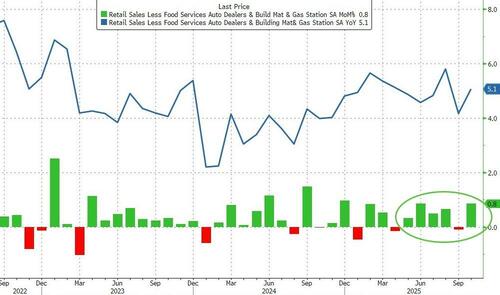





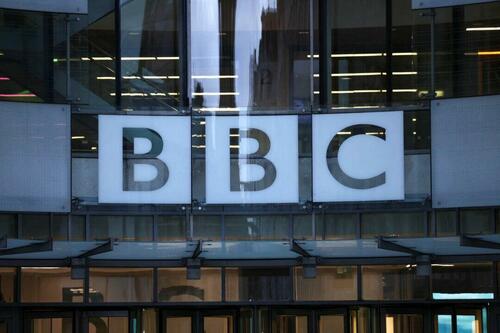 The BBC logo outside the BBC Broadcasting House in London on Nov. 10, 2025. REUTERS/Jack Taylor
The BBC logo outside the BBC Broadcasting House in London on Nov. 10, 2025. REUTERS/Jack Taylor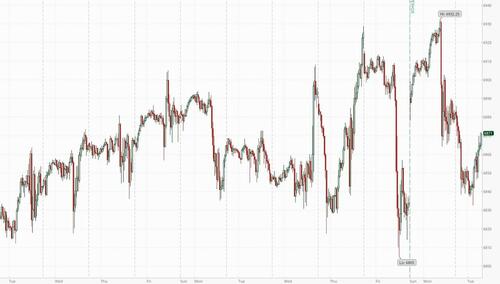
Recent comments